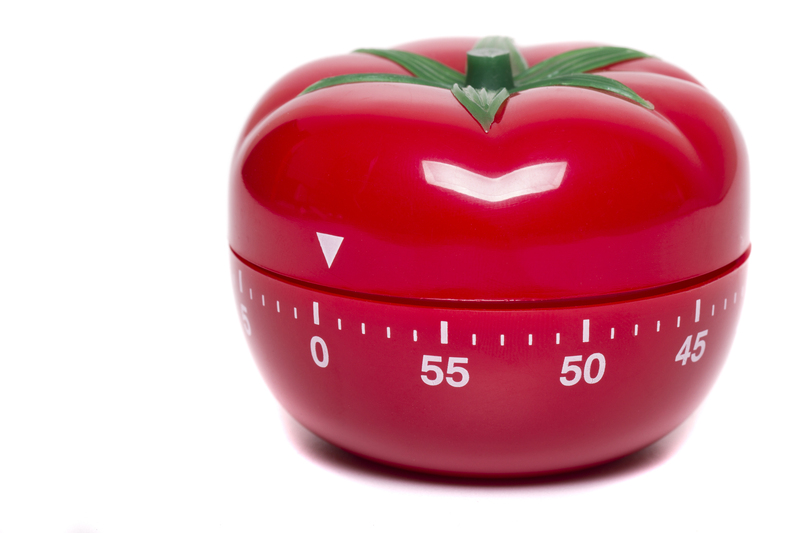Essential Techniques for Removing Mould from Window Sills
Posted on 17/06/2025
Essential Techniques for Removing Mould from Window Sills
Mould on window sills is not just an eyesore; it's a potential health hazard and an indicator of underlying moisture problems in your home. With the right knowledge and effective cleaning techniques, you can eliminate mould, prevent its return, and ensure your indoor environment remains fresh and healthy. In this comprehensive guide, we delve deep into the best practices for removing mould from window sills, equipping you with both preventative measures and step-by-step instructions for safe mould removal.
What Causes Mould Growth on Window Sills?
Mould is a type of fungus that thrives in damp, poorly ventilated environments. Window sills are particularly prone to mould due to condensation, water leaks, and insufficient airflow. Here are the primary causes:
- Condensation: When warm indoor air meets cold glass, moisture can accumulate and drip onto window sills, creating the perfect breeding ground for mould.
- Poor Ventilation: Rooms lacking proper airflow trap moisture, heightening the risk of fungal growth.
- Water Leaks: Gaps around window frames, failed sealants, or cracks allow water to seep in, keeping window sills damp.
- Organic Material: Dust, dirt, and debris provide food for mould spores to multiply.

Why It Is Important to Remove Mould from Window Sills
Allowing mould to persist can result in more than just unsightly stains. Health risks associated with indoor mould include allergic reactions, respiratory issues, and aggravation of asthma. Furthermore, mould on window sills can lead to:
- Permanent damage and discolouration of window frames and sills
- Weakened building materials
- Spread of spores to other rooms
Therefore, knowing the best techniques for removing mould from window sills is crucial for maintaining your home's integrity and your family's wellbeing.
Preparations Before Cleaning Mould from Window Sills
Safety comes first when dealing with mould removal. Here's what you need to do before starting:
- Ventilate the Area: Open windows and doors to facilitate airflow and help reduce airborne spores.
- Wear Protective Gear: Use gloves, a mask (preferably an N95), and goggles to protect yourself from mould exposure.
- Gather Cleaning Supplies: You'll need cleaning agents (commercial mould remover, white vinegar, baking soda, or hydrogen peroxide), sponges, scrub brushes, a spray bottle, paper towels, and rubbish bags.
Effective Techniques for Removing Mould from Window Sills
There are several proven methods for cleaning mould off window sills. The choice of technique depends on the severity of the mould, the material of your window sill, and your preference for natural or chemical solutions.
1. Cleaning with Vinegar
White vinegar is a powerful, non-toxic, and affordable mould killer. Acetic acid in vinegar destroys up to 82% of mould species and helps sanitize surfaces. Here's how to use vinegar for mould removal on window sills:
- Pour undiluted white vinegar into a spray bottle.
- Spray generously on the mouldy area of the window sill.
- Let it sit for at least one hour to allow the acid to break down mould and kill the spores.
- Wipe the surface with a clean cloth or sponge and rinse with warm water.
- If needed, repeat the process for stubborn stains.
2. Using Baking Soda for Gentle Abrasive Cleaning
Baking soda not only cleans but also absorbs moisture, helping to prevent future fungal outbreaks. For delicate window frames or if you want a softer, non-toxic option, follow these steps:
- Mix one tablespoon of baking soda with enough water to form a paste.
- Apply the paste to the affected area using a soft brush or cloth.
- Scrub gently in a circular motion to remove mould growth.
- Rinse with warm water and dry thoroughly with paper towels.
3. Hydrogen Peroxide for Stubborn Mould
Hydrogen peroxide is a potent antifungal and antibacterial agent. Its bubbling action aids in lifting mould and disinfecting surfaces. To use this method:
- Use 3% hydrogen peroxide and pour it into a spray bottle.
- Spray the affected window sill area and leave for 10-15 minutes.
- Scrub with a stiff brush, wipe away the residue, and rinse thoroughly.
- Dry the area completely to prevent more mould growth.
4. Commercial Mould Removers
For severe or recurring infestations, especially on wooden window sills, a commercial mould and mildew remover may be necessary. Always follow the manufacturer's instructions, and ensure the room is well-ventilated during application.
5. Cleaning Mould from Wooden Window Sills
Wood is particularly vulnerable to mould and rot. You must be gentle to avoid damaging the surface but thorough enough to remove all traces:
- Start with a gentle solution like vinegar or mild dish soap and water.
- For persistent stains, small amounts of hydrogen peroxide may be used, but be sure to spot test first as it can lighten the finish.
- After cleaning, allow the wood to dry completely. Consider applying a wood sealant to protect against future moisture problems.
How to Remove Mould from Window Sills: Step-by-Step Guide
Remove stubborn mould effectively using these clear steps:
- Remove Dust and Debris: Use a dry cloth or vacuum with a HEPA filter to eliminate loose spores and dirt.
- Apply Your Chosen Cleaner: Spray or apply the cleaning solution thoroughly over the affected area.
- Let It Sit: Allow the cleaner to soak for the recommended time--this is vital for killing mould at the root.
- Scrub the Surface: Use an old toothbrush, scrub brush, or sponge to agitate the mould and lift it off the sill.
- Wipe and Rinse: Remove the residue with a damp cloth, then dry with a paper towel.
- Dispose of Cleaning Materials: Bag up sponges, towels, and gloves and dispose of them properly to avoid spreading spores.
Tips to Prevent Mould from Returning to Window Sills
Once you've succeeded in removing mould from window sills, it's essential to address the underlying causes to prevent regrowth. Here's how:
- Improve Ventilation: Install trickle vents, use extractor fans, or open windows to increase airflow and reduce condensation.
- Manage Humidity: Keep indoor humidity below 60%. Use dehumidifiers where needed, especially in winter.
- Fix Leaks and Seal Gaps: Repair any window leaks and seal gaps where moisture could enter.
- Regular Cleaning: Dust and clean window sills frequently to remove organic materials that feed mould.
- Use Mould-Resistant Paint: After removing mould, repaint sills with a mould-inhibiting paint or treatment as an extra barrier.
When to Call the Professionals for Mould Removal
DIY methods are effective for mild to moderate outbreaks on window sills. However, professional mould remediation is recommended if:
- Mould covers a surface larger than 1m?
- Mould keeps recurring despite regular cleaning and preventative steps
- You experience health symptoms such as persistent coughing, allergies, or breathing difficulties
- You suspect mould has penetrated behind walls or around window frames
Experts can identify and eliminate root moisture sources, treat large infestations safely, and offer specialized solutions for lasting protection.

Frequently Asked Questions About Cleaning Mould from Window Sills
Is it safe to clean mould on window sills yourself?
Yes, you can safely remove mould from window sills if the affected area is small and you use appropriate safety gear. Avoid dry brushing, which can release spores, and always handle mould removal in a well-ventilated room.
Can bleach be used to remove mould from window sills?
While bleach is effective on non-porous surfaces, it may not fully eliminate mould on porous materials such as wood. Also, bleach can cause toxic fumes. Natural alternatives like vinegar and hydrogen peroxide are often safer and equally effective.
How can you prevent fungi from returning to window sills?
The key to long-term mould prevention is managing moisture: use dehumidifiers, repair leaks quickly, ventilate rooms, and clean regularly. Adding a mould-resistant sealant or paint to window sills also helps.
Does sunlight prevent mould on windows?
Yes. Direct sunlight inhibits mould growth by drying out surfaces and killing spores. Keeping blinds and curtains open during sunny hours can be a helpful preventative measure.
Are there eco-friendly ways to remove mould from window sills?
Many eco-conscious homeowners prefer natural mould removal methods such as vinegar, baking soda, and even tea tree oil, which is a natural antifungal agent. These alternatives are safer for your family and the environment.
Conclusion: Maintain Healthy Window Sills All Year Round
Mould on window sills is a common household issue but can be managed effectively with the right cleaning techniques and preventative strategies. Regular inspection, quick action at the first sign of moisture, and diligent cleaning will keep your window sills--and your home--mould-free and healthy. Apply these essential mould removal techniques to safeguard your living environment and preserve the beauty and durability of your window fixtures.
Removing mould from window sills doesn't have to be a daunting chore. With these tried-and-tested methods, not only will you eliminate unhealthy mould, but you'll also reclaim a brighter, fresher space in your home.
Take action today to ensure your window sills stay spotless and your indoor air remains pure and safe for all.




